Prevalence and risk factors of canine leishmaniasis in Morocco: a systematic review and meta-analysis
- PMID: 36457764
- PMCID: PMC9606190
- DOI: 10.1007/s12639-022-01521-2
Prevalence and risk factors of canine leishmaniasis in Morocco: a systematic review and meta-analysis
Abstract
Human visceral leishmaniasis has long been associated with canine leishmaniasis (CL). However, to date, there is no clear information on the status of the disease in dogs in Morocco that could be used by policymakers for the prevention of human cases. This study aims to assess the status of CL in Morocco and its risk factors through an exhaustive literature search. The meta-analysis was performed using RevMan 5.4. The main results showed that the overall prevalence of CL in Morocco is 17% (95% CI: 0.12-0.22), caused by two strains of Leishmania parasite: Leishmania tropica and L. infantum. According to the region, the maximum prevalence was reported in the coastal provinces and in the central part of the country; while, the CL risk was higher in rural area (18% [95% CI: 0.14-0.23]) and at altitude above 1000 m (23% [95% CI: - 0.08-0.53]). Regarding the intrinsic factors, the prevalence of the disease increased with the age of the dog, (30% [95% CI - 0.09-0.68) and the risk was very high in clinically asymptomatic dogs (RR = 2.08 [95% CI: 1.15-3.76]). This study is the first in Morocco indicating the CL prevalence, its geographical distribution and detailing its risk factors. These results are needed to improve management strategies for the canine reservoir of leishmaniasis in Morocco and interrupt the local transmission cycle to humans.
Supplementary information: The online version contains supplementary material available at 10.1007/s12639-022-01521-2.
Keywords: Canine leishmaniasis; Meta-analysis; Morocco; Prevalence; Risk factors; Systematic review.
© Indian Society for Parasitology 2022.
Conflict of interest statement
Conflict of interestThe author(s) declare(s) that there are no conflicts of interest regarding the publication of this article.
Figures
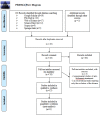
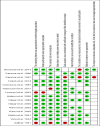
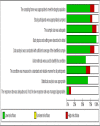



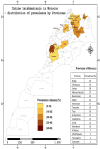
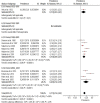







Similar articles
-
New epidemiological pattern of cutaneous leishmaniasis in two pre-Saharan arid provinces, southern Morocco.Acta Trop. 2017 Sep;173:11-16. doi: 10.1016/j.actatropica.2017.05.016. Epub 2017 May 17. Acta Trop. 2017. PMID: 28527882
-
New epidemiological aspects of visceral and cutaneous leishmaniasis in Taza, Morocco.Parasit Vectors. 2016 Nov 29;9(1):612. doi: 10.1186/s13071-016-1910-x. Parasit Vectors. 2016. PMID: 27899126 Free PMC article.
-
[Human leishmaniases in Morocco: a nosogeographical diversity].Pathol Biol (Paris). 2011 Aug;59(4):226-9. doi: 10.1016/j.patbio.2009.09.003. Epub 2009 Nov 25. Pathol Biol (Paris). 2011. PMID: 19942371 French.
-
The Sporadic cutaneous leishmaniasis due to Leishmania infantum in Morocco: A presumably trend towards endemicity.Acta Trop. 2022 Mar;227:106288. doi: 10.1016/j.actatropica.2021.106288. Epub 2021 Dec 20. Acta Trop. 2022. PMID: 34933005 Review.
-
The current status of cutaneous leishmaniasis in Morocco.Turkiye Parazitol Derg. 2014;38(1):5-8. doi: 10.5152/tpd.2014.1401. Turkiye Parazitol Derg. 2014. PMID: 24659693 Review.
Cited by
-
Diversity of biting midges, mosquitoes and sand flies at four dog shelters in rural and peri-urban areas of Central Morocco.Parasite. 2024;31:57. doi: 10.1051/parasite/2024057. Epub 2024 Sep 27. Parasite. 2024. PMID: 39331804 Free PMC article.
-
Veterinary perspectives on the urbanization of leishmaniosis in Morocco.Parasit Vectors. 2024 Aug 19;17(1):348. doi: 10.1186/s13071-024-06411-5. Parasit Vectors. 2024. PMID: 39160608 Free PMC article.
-
Entomological Exploration of Sand Flies in Human Communities Affected by Cutaneous and Visceral Leishmaniasis in El Hajeb Province, Morocco.ScientificWorldJournal. 2023 Apr 27;2023:4628625. doi: 10.1155/2023/4628625. eCollection 2023. ScientificWorldJournal. 2023. PMID: 37151994 Free PMC article.
-
Serological survey of Leishmania infantum in apparently healthy dogs in different areas of Spain.Vet Med Sci. 2023 Sep;9(5):1980-1988. doi: 10.1002/vms3.1172. Epub 2023 Jul 12. Vet Med Sci. 2023. PMID: 37438910 Free PMC article.
References
-
- Boussaa S, Kasbari M, El Mzabi A, Boumezzough A. Epidemiological Investigation of Canine Leishmaniasis in Southern Morocco. Adv Epidemiol. 2014;2014:1–8. doi: 10.1155/2014/104697. - DOI
-
- Critical-appraisal-tools—Critical Appraisal Tools | Joanna Briggs Institute (2020) https://jbi.global/critical-appraisal-tools
-
- da Sevá AP, Brandão APD, Godoy SN, Soares RM, Langoni H, Rodrigues BC, Gava MZE, de Zanotto PFC, Jimenez-Villegas T, Hiramoto R, Ferreira F. Investigation of canine visceral leishmaniasis in a non-endemic area in Brazil and the comparison of serological and molecular diagnostic tests. Revista Da Soc Brasileira de Med Trop. 2021 doi: 10.1590/0037-8682-0182-2021. - DOI - PMC - PubMed
LinkOut - more resources
Full Text Sources
